Deep in the jungle of the Maya Biosphere Reserve in northern Guatemala, controversy is growing over a plan to build a Disney-like Maya theme park. Its promoter, an American archaeologist, says it will be the salvation of the region, preventing deforestation, drug trafficking and halting migration to the U.S.
Forestry workers, conservation groups and archaeologists working in the area disagree with the plans and are calling for a halt to the proposal and the $100 million in funding currently being sought from the U.S. Government and others.
The plan is the brainchild of Dr. Richard D. Hansen, an archaeologist from Rupert, Idaho, and director of the El Mirador archaeological project in the Maya Biosphere Reserve, or MBR. Hansen has worked in the area for decades and has pursued this vision for at least 20 of those years.
Details of the park plan are not available to the public. But Hansen’s 2018 executive summary of the plan, titled “Saving the Mirador Basin,” includes an array of hotels and other infrastructure, including a train that would traverse the rainforest.
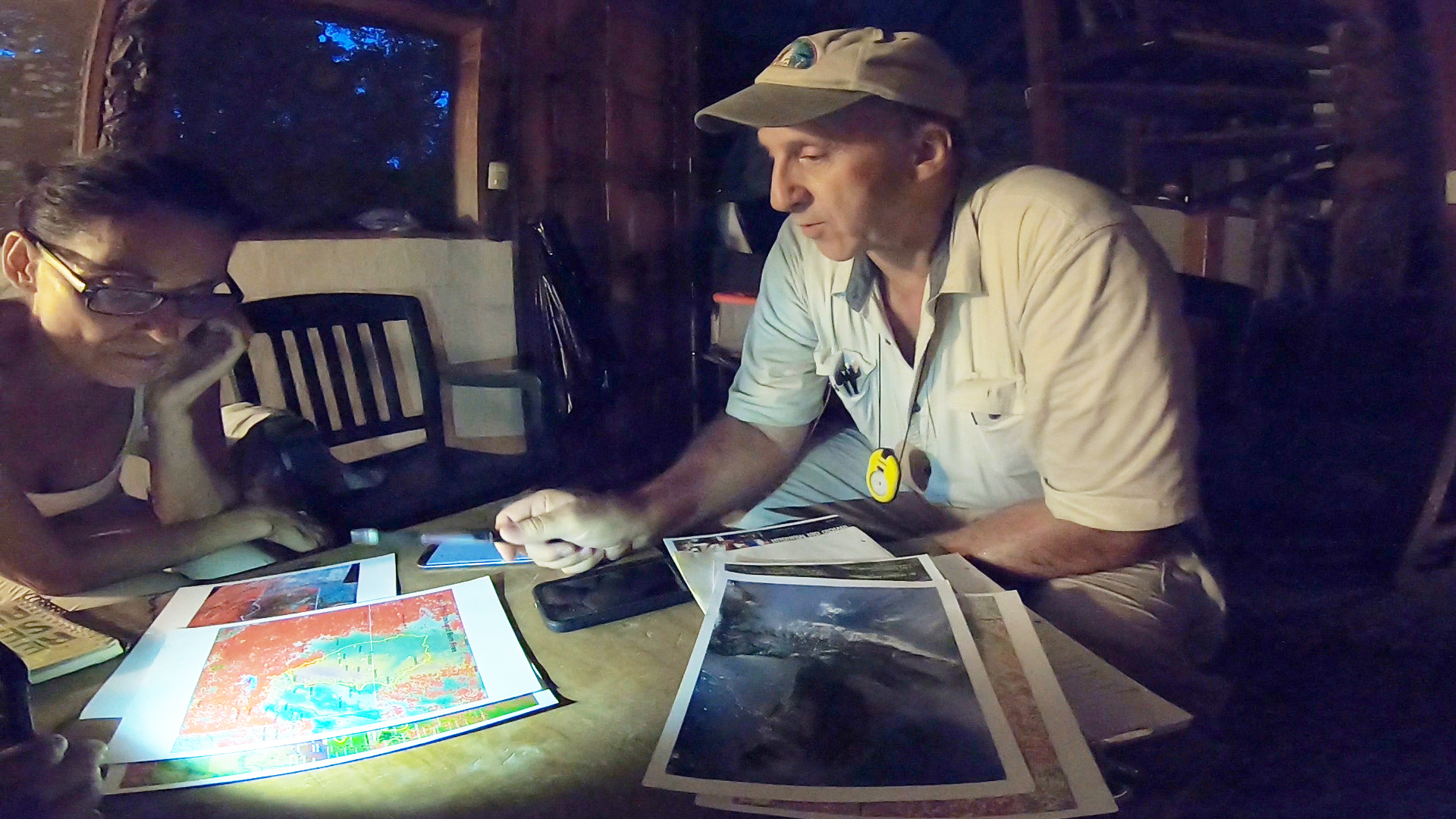
Journalist Teena Clipston and Dr. Richard D. Hansen during an interview at El Mirador in the Maya Biosphere Reserve. Photo credit: Kelly McLaughlin.
“We have a real live Disneyland here,” Hansen explains. “We don’t have to invent anything. It’s all here. Animals, crocodiles, tapirs, jaguars, ruins, jungle, macaws, parrots, toucans, it’s all here!”
The train would link nine archaeological sites and would take tourists into the jungle along a 50-kilometer (31-mile) route through the jungle from the small town of Carmelita. The plan also calls for construction of museums, visitor centers, restaurants, water collection facilities, as well as high and medium-end hotels, all managed by a private company.
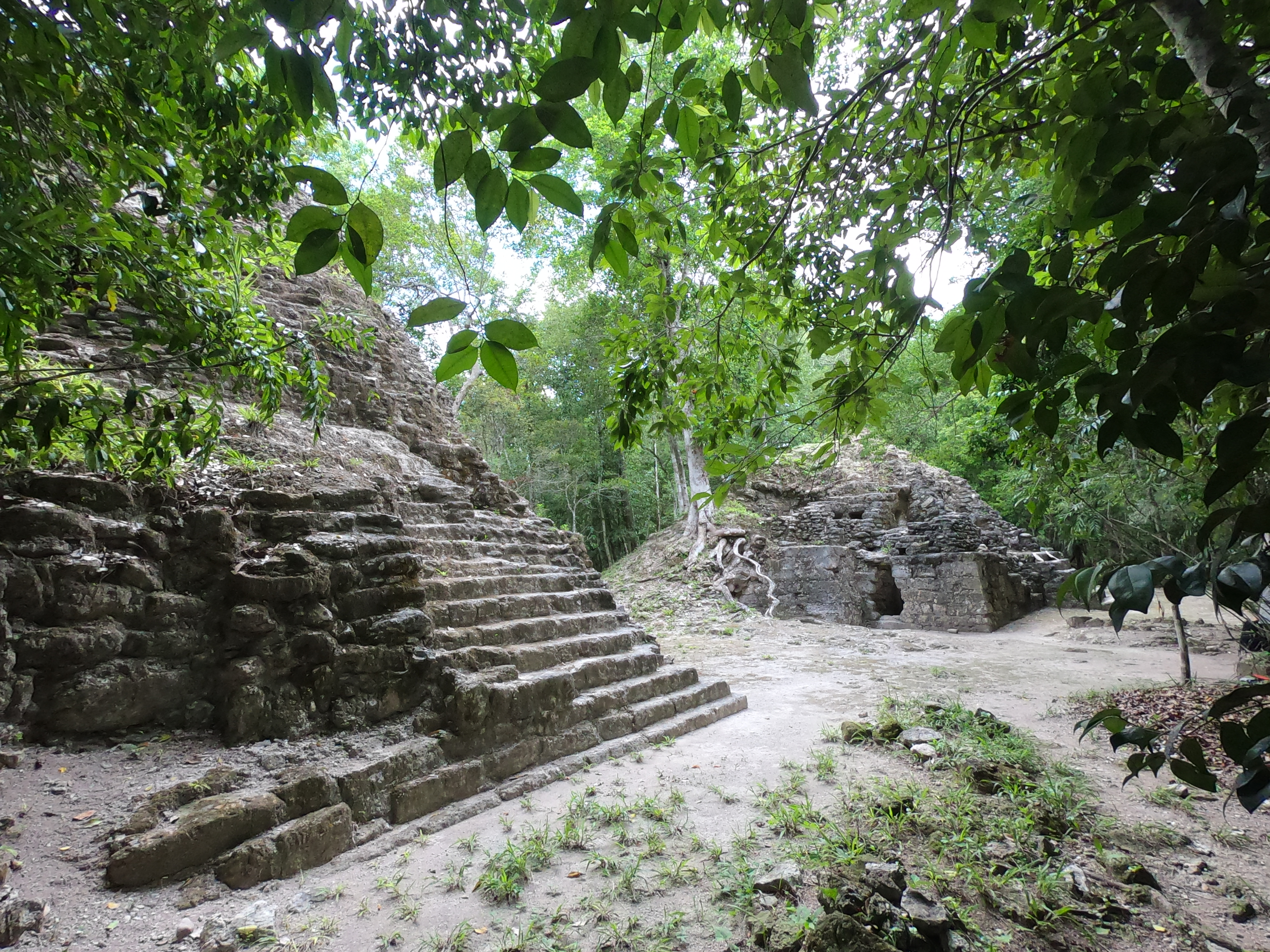
The ruins of La Muerta, located between the sites of El Tintal and El Mirador. The train would leave the village of Carmelita, to El Tintal and pass La Muerta to El Mirador. Photo credit: Kelly McLaughlin.
To build the park and the train, Hansen requires a change in legislation to eliminate or modify current management units that include national parks, biotopes and forest concessions. He seeks to rename the encompassing area of approximately 3,000 km2 (1,158 mi2) as a “Wilderness Area.”
Critics reject his calling the proposed park a Wilderness Area, arguing that a Wilderness Area is by definition restrictive to human activities.
“It’s a different model,” says Hansen, who is also president of the Foundation for Anthropological Research and Environmental Studies, known as FARES. “It is entirely different from what they (Guatemalans) are used to dealing with or what they know, and what they have had in the past. “But it is a model that will work,” he insists.
Dr. Tomas Barrientos, codirector of La Corona Archaeological Project in the MBR, says the plan ignores the impact on local communities. “The big mistake here is you can’t just take a conservation model from another country and copy and paste it into Guatemala,” he says.
“There are social and political factors that cannot ensure the adequate protection of the MBR by the government alone. The role that local communities have recently played in the preservation of nature must be taken into consideration.”
Hansen says opposition to his proposal is largely because Guatemalans are not familiar with the type of development he plans.
“There are no roads but a miniature train, and a miniature train goes on the causeway. We don’t impact anything. But we will let high-end eco-hotels in here so you come in, have a nice place to stay, a nice meal, and a nice bed, and a shower.”
The Association of Forest Communities of Petén says the park would disrupt the livelihoods of thousands of native residents and disenfranchise at least five local community organizations who make a living from sustainable forestry. The association argues that the people who would be displaced are the very people who have protected this area from deforestation and forest fires for decades.
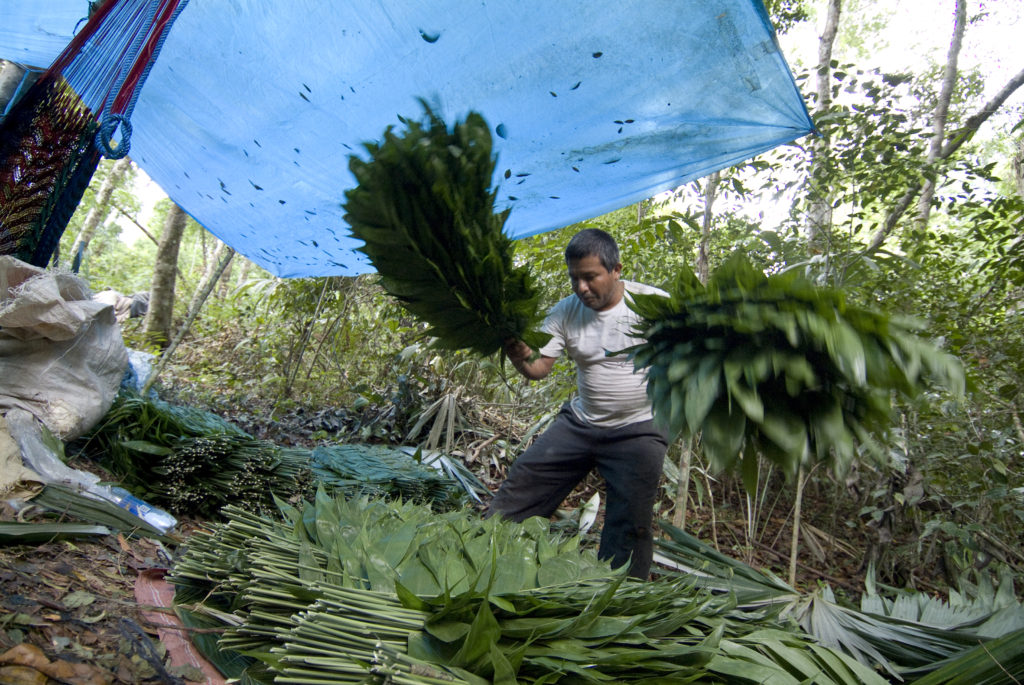
Xatero (xate leaf harvester) working in community forest concessions of MBR. Photo credit Benjamin Schilling.
In his bid to raise more than $100 million dollars for the project, Hansen claims the area is under immediate threat of deforestation by drug traffickers who he says are laundering their money through cattle farms.
Hansen’s organization has hired a lobbyist to help get funding from the U.S. government. Jerry Weller, former Republican Congressman from Illinois, is managing principal of New World Group public affairs and is at the helm of lobbying efforts. FARES paid New World Group a total of $90,000 in 2018-19 ($45,000 each year as of Oct 25, 2019) to lobby for funds from the United States Environmental Protection Agency’s (EPA) Environment & Superfund for Rainforest Protection.
However, key conservation groups and academic colleagues in the MBR say the “Mirador Basin” is not in any immediate danger, and worry that removing preexisting national parks, biotopes and forest concessions would create instability.
They point to a 2017 report by Consejo Nacional de Áreas Protegidas, a government agency that manages protected areas, showing a net gain in the amount of forest within the Eastern MBR over recent years. And they say Hansen is ignoring recent data showing positive impact from efforts made by community forest concessions.
The environmental group Rainforest Alliance, in an article titled “Community: The Secret to Stopping Deforestation in Guatemala,” says local residents can be key to saving the biosphere.
“These conservation successes are thanks to the people who live in the concessions—who are motivated to protect the forest because they make a good living from it. The concessions generate more than $5,000,000 USD in annual revenue and thousands of jobs—this in a region where legal employment is scarce,” the article said. “Poverty rates in the concessions are significantly lower than in other parts of Guatemala, making emigration from the concession communities virtually unheard of—a noteworthy fact given that in general, the rate of Guatemalans migrating to the US is high and rising.”
Other archaeologists working in the area are speaking out against Hansen’s proposal, calling it a scheme to instill fear into the public with the goal of developing the area to fulfill his personal agenda.
Dr. Francisco Estrada-Belli, a Guatemalan archaeologist and director of the Holmul Archaeological Project, openly voices his disapproval. “Over the last twenty-five years, I have seen first-hand Hansen’s actions and heard his speeches about his plans for the Mirador region. I am also very familiar with his scholarly work, much of which has not passed through the proper scholarly review,” Estrada-Belli said.
“It concerns me that those outside the academic community who currently support Hansen’s project genuinely believe he is working to benefit Guatemala, while the plan appears to be more about him having absolute control to a large portion of this country’s territory than to benefit Guatemala or science.”
“I cannot speak to his motives,” Estrada-Belli continues, “but his agenda might be explained by the fact that he is a Mormon and many Mormons believe El Mirador and nearby sites are mentioned in the Book of Mormon and therefore must be under his control.”
Some Mormons believe that the great Maya pyramids were built by Israelites expelled from Jerusalem six centuries before Christ. But Hansen insists his faith is irrelevant.
Others worry that the rights of Guatemalan people, many of whom are descended from the ancient Maya, will be systematically lost. Still others fear the destruction of the fragile rainforest biosphere.
“The inescapable conclusions are that the ‘Mirador Basin Initiative’ is scientifically baseless, technically dubious,” says Roan Balas McNab, the Program Director of Wildlife Conservation Society in Guatemala. “It remains highly controversial, without the support of those most likely to be directly impacted,”
“Dr. Hansen now attempts to impose his vision on the area through lobbying in Washington, where many decision makers lack understanding of how his vision could backfire, undermining the social fabric of the eastern Maya Biosphere Reserve, one of the few Mesoamerican wilderness areas that is actually increasing in size.
“Our call to Guatemalans, Mexicans, and the U.S. supporters alike is that they take a step back, debate the merits and challenges inherent in this proposal, and at all costs avoid a rush to judgement,” McNab says.
What responsibility does the U.S. have when it comes to funding conservation projects in other countries when its local people and institutions oppose the project? Further investigation into the proposal is certainly required.
For more information:
Media contact: Teena Clipston is a journalist specializing in Mesoamerican archaeology and ancient history. teenaclipston@live.com
Archaeology contact: Dr. Francisco Estrada-Belli is director of the Holmul Archaeological Project, president of the Maya Archaeology Initiative, and a Maya Biosphere Watch advisor. franciscoeb@gmail.com
Forestry and Community contact: Marvin Bámaca is press contact for Asociación de Comunidades Forestales de Petén, mbamaca@acofop.org.
Archaeology contact: Dr. Tomas Barrientos is codirector of La Corona Archaeological Project in the MBR. tbarrientos@uvg.edu.gt
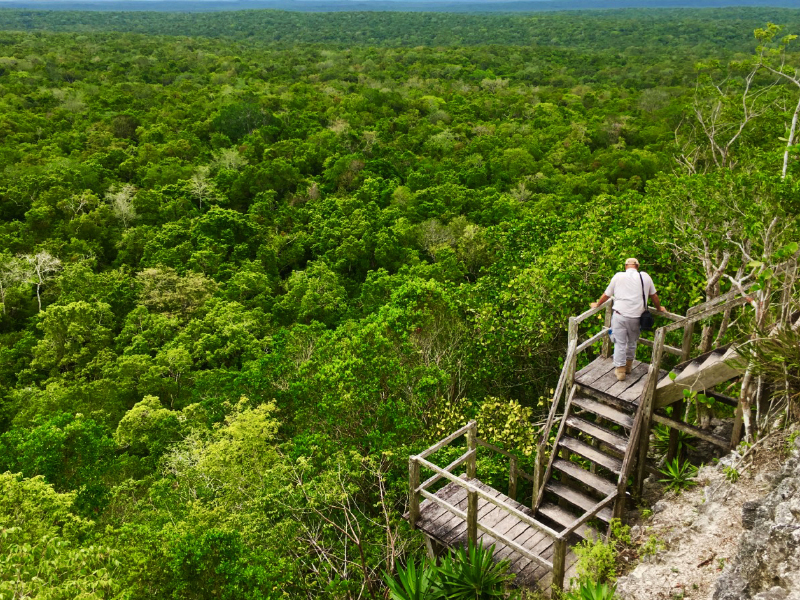
Richard D. Hansen pauses while climbing the staircase up to the top of La Danta pyramid. Photo credit Kelly McLaughlin.
Maya Biosphere Reserve facts and history
The Maya Biosphere Reserve (MBR) was created in 1990 and protects the heart of the trinational Selva Maya, the largest tract of forest within Mesoamerica. The MBR covers an area of 21, 602 km2 and is divided into zones, each zone with a protected status. The core zones are national parks and biotopes. Management is led by Guatemala’s National Council of Protected Areas (CONAP), and co-managed by other institutions that include; Centro de Estudios para la Conservacion (CECON), Defensores de la Naturaleza, and the Ministry of Culture. El Mirador is currently part of the Mirador-Río Azul National Park.
Map of proposed Wilderness Area and Forestry Concessions
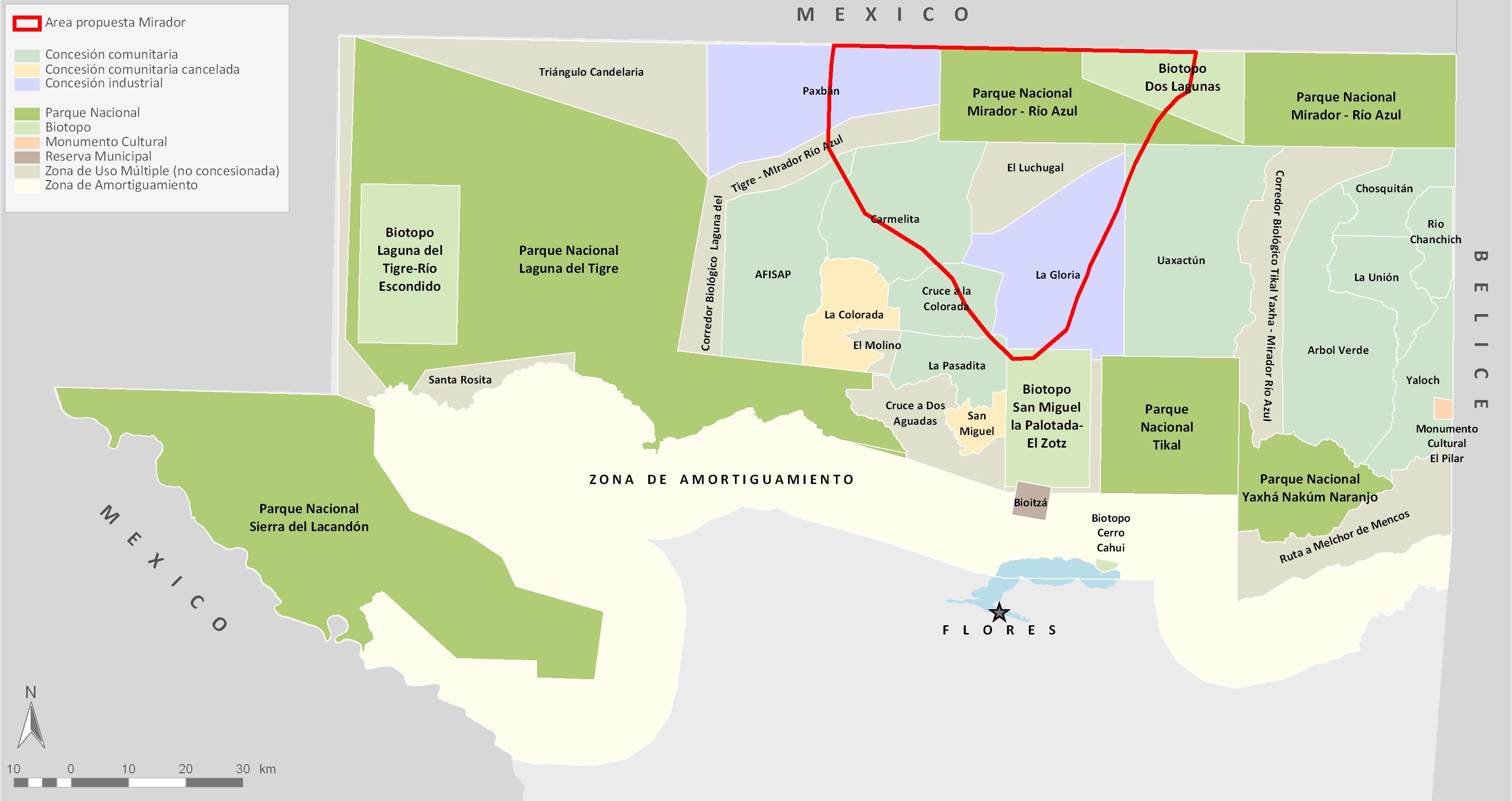
Map of the Maya Biosphere Reserve and other protected areas. Concessions outlined in red and known archaeological sites displayed as triangles.
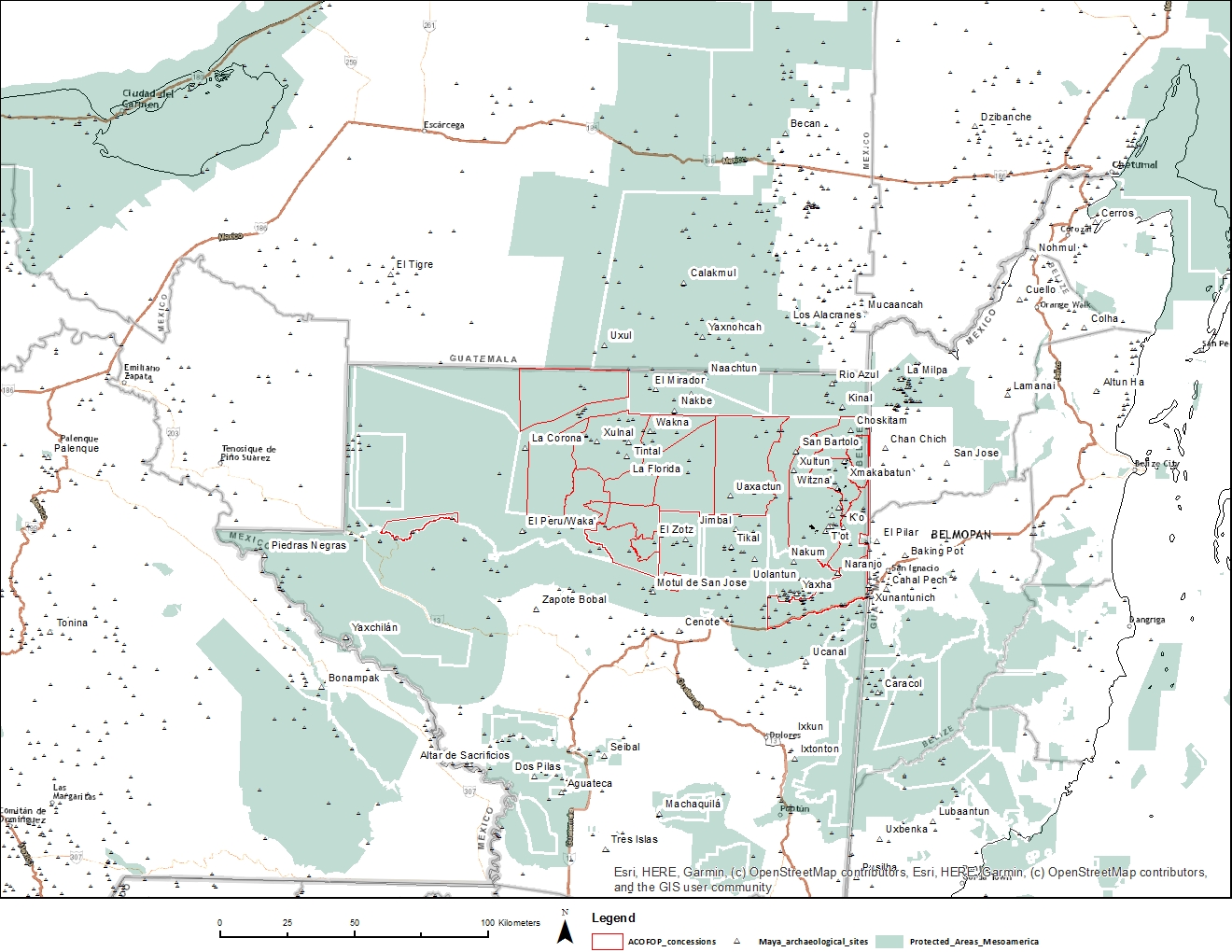
Forest regeneration and regeneration processes 2016 -2017. Courtesy of CONAP.

Download the 2017 report by Consejo Nacional de Áreas Protegidas (CONAP)
Voices on Conservation from Rainforest Alliance



